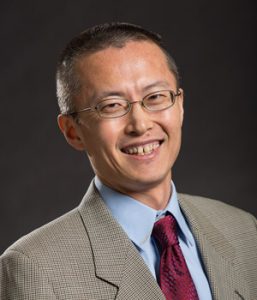
The National Science Foundation awarded Jian Zhao, associate professor, civil & environmental engineering and director of the college’s Virtual Reality Infrastructure Laboratory, with a $135,000 grant for his project “CLC interlocking masonry.”
In this small business technology transfer project, Zhao — who researches strengthening infrastructure’s interfaces – will test and evaluate a dry-stack masonry construction technology; he will test its ability to fill incursions and block irregularities, evaluate interfacial shear resistance between the interlocking features, and evaluate the interfacial adhesion activated through pressure or moisture. These fundamental properties are critical to resolving the primary barriers for translation of this technology.
The NSF’s Small Business Technology Transfer program supports small businesses as they engage in federally-sponsored research that has the potential for commercialization.
The units– made of cellular lightweight concrete (CLC) and an activated adhesive—could be used for mid-rise multi-family housing, a key component of affordable housing stock in the United States and worldwide.
Zhao will collaborate with Konstantin Sobolev, professor, civil & environmental engineering, (co-PI) and Bradford Wells (PI) at CLC Global USA. Sobolev will lead the development of glue between blocks.
The total NSF grant is for $224,999; UWM’s share is $135,000.
About Zhao’s research
Zhao, a seismic engineer, is an expert in strengthening infrastructures’ interfaces. These include where a road’s pavement meets the subbase, where a structure’s concrete meets metal and where natural forces meet a building’s material. Stronger interfaces, he says, can bolster infrastructure from weather, natural disasters and wear and tear.
He has researched energy-dissipating building bricks constructed from recycled materials, with the goal of creating a mechanism that dissipates energy caused by sway during a natural disaster—whether it’s air pressure, vibrations or force. This material would be inset at the interfaces between the load-bearing parts of the building and would provide something to fail, so that building itself doesn’t fail.
He also has developed a patent-pending anchor that strengthens the interface between concrete and adhesives. It could prevent failures (tied to epoxy-embedded anchors) that have been linked to falling concrete panels.